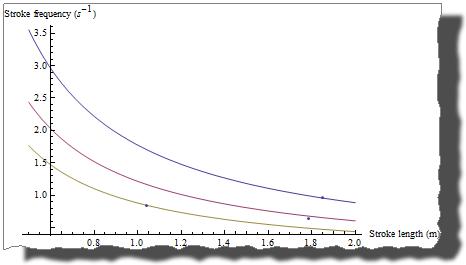The world record holder on 1500m is Sun Yang, an analysis of his stroke per length and stroke rate can be found at Sun Yang. His stroke rate (or frequency) is 0.96 (almost a stroke per second) and his strokes per 50m length is 27.
Your stroke rate is 0.85 (48 strokes per 56 seconds) or 51 strokes per minute, i.e. slower than Sun Yang (58 strokes per minute), and you need 48 strokes (1.04 m/stroke) where he needs 27 (1.85 m/stroke).
In figure 1, I have plotted the two points and one of my own measurements: {{1.85, 0.96}, {1.04, 0.85}, {1.78, 0.68}} and also - assuming constant speed - the Stroke frequency as a function of Stroke length., that is Speed = Stroke frequency * Stroke length
Here, you can see that if Sun Yang had a shorter Stroke length (e.g. not have as long arm as he has), he has to increase the Stroke frequency to swim with a the same speed. For me to approach Sun's speed (not likely to happen :-)), my focus should be to increase the frequency.

Fig 1. Constant speed as a function of Stroke frequency and Stroke length
Whether you want to change speed or keep the speed constant and work with a frequency, length combination, depends on your overall goals for swimming. Two references that can help you are:
- An analysis from an Total Immersion instructor, Mediterra Swim - Smart speed part 1 and 2, there is no good/bad answer there but a framework for analyzing and thinking about the problem.
- Based on Swim Smooth, your stroke rate is just about right for your 100m speed, se Swim smooth stroke rate.
Assuming that you want to go faster, I would experiment with the stroke rate, e.g. through getting a tempo trainer, e.g. Finis tempo trainer. However, my own experience as almost beginner, is that if I increase the effort beyond my technique, I get really tired very fast.
